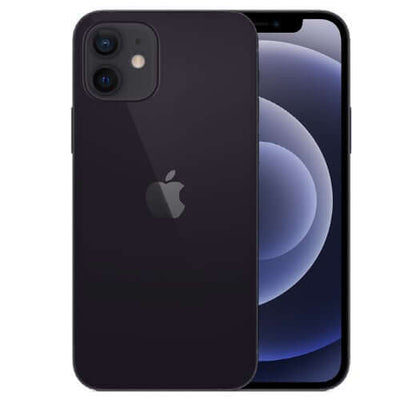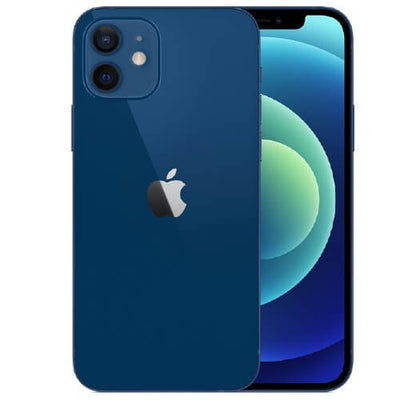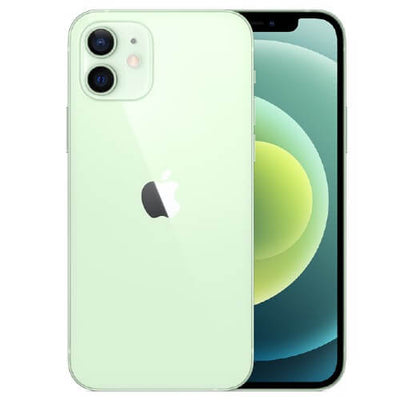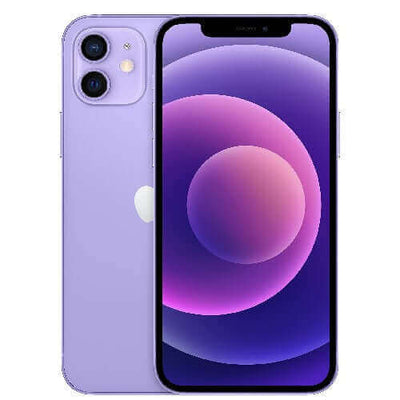Introduction
Since the launch, AirPods Pro 2 set standards for noise-canceling earbuds. From the smooth design down to excellent sound and good noise cancelation, AirPods Pro 2 rank among the best options for gadgets enthusiasts. Bigger functionalities will make the price worth it, but coming at a huge cost of Dhs. 915, many people consider them worth investing in because of the premium experience which they deliver.
Recently, however, Apple launched the AirPods 4, which introduces new features at an even more reasonable price. The base model starts at Dhs. 475, while an advanced version with ANC and a wireless charging case garnered Dhs. 659 for purchase. Clearly, then, there's a very real question: is the extra money required to buy the AirPods Pro 2 worth it, or should you go for the AirPods 4?Let’s dive into a detailed comparison of these two models to help you decide.
Design
The outward design of the AirPods Pro 2 combines an ergonomic feel with a sleek white finish that is sure to characterize signature Apple products. The earbuds come with silicon tips in several sizes, ensuring the snug best fit for ears of all shapes and sizes. This adds value to good noise cancelation by providing enhanced comfort. Since they are lightweight, they were easy to wear for extended periods without causing discomfort.
But where it differs - and this is important - is taking the fourth generation in a more streamlined approach, ditching the silicon tips integral to the Pro model. The idea is that, according to Apple, millions of ear data points were analyzed; of course, which should ensure the AirPods 4 are quite comfortable.
Nevertheless, this may give way to lesser security with respect to fit during more rigorous activities. The charging case for the AirPods 4 has also been upgraded with a capacitive touch panel on the front for easier manipulation and an LED indicator that only turns on when the case is open for an added touch of refinement in the design.
While both models are visually appealing and practical, the comfort addition and functionality of the silicon ear tips make the design of the Pro 2 far better of the two.
Features
The AirPods Pro 2 leads with class-leading noise cancellation, arguably the best in its class. Be it an noisy office, a busy café, or a crowded subway, the AirPods Pro 2 ensures that the unwanted background noise is at a minimum, hence providing an immersive experience.
Noise cancellation also features multiple modes, which include transparency mode for allowing important external sounds and adaptive mode, which automatically adjusts to block out unnecessary noise while allowing important sounds to get through.
On the AirPods 4, only the higher-end model comes with ANC, and it still can't match the level found in the Pro 2. According to Apple, the AirPods Pro 2 block out almost twice the amount of noise compared with the AirPods 4. The AirPods 4 feature Spatial Audio nonetheless, which enriches the sound by providing a virtual surround experience and is thus ideal for music and movie consumption.
Perhaps one of the most unique features of the AirPods Pro 2, however, is how they can double as hearing aids. They can scan your hearing and adjust audio settings on their own to compensate for some degree of hearing deficiencies and even become a pair of module medical-grade hearing aids in some instances. A fantastic feature, this adds an altogether astonishing new dimension to the buds, propelling them into way more than just an audio accessory.
Performance and Comfort
Both are comfortable to use, but the AirPods Pro 2 has an advantage with its silicon tips. These provide a better seal in the ear for even better active noise cancellation, aside from just making general sound clearer and more robust.
The Pro 2 earbuds are designed to fit most ears, but if this isn't enough, the differently-sized tips that come in every box enable the perfect fit to be chosen.
They are still comfortable, even without the tips, because of Apple's advanced ergonomic design work on AirPods 4. According to Apple, it studied millions of ear shapes to make the AirPods 4 fit in the most comfortable way possible. But due to the lack of these tips, they may not hold too securely during high-movement activities, such as jogging or exercising.
Battery Life
To a lot of users, battery life is an important factor; in that regard, both models are pretty stellar. The AirPods Pro 2 come with up to 6 hours of continuous playback on one charge, extended to up to 30 hours with the case. Because of the little wireless charging coil in the case, the process is pretty convenient: just wirelessly charge the case if a user has a compatible charging pad.
In similar regard, the AirPods 4 provide single-charge battery life of up to 5 hours, further extended up to 30 hours when using the charging case. A higher-end scheme over the AirPods 4 also supports wireless charging; however, it remains only on the ANC version. While both models are somewhat similar with regard to overall battery life, the Pro 2 edges out slightly because of its longer playback time per charge.
Conclusion
All said, the AirPods Pro 2 and AirPods 4 have some fantastic features; however, they still tend to cater to somewhat different markets. With class-leading noise cancellation, the absolute best comfort, and other extended features such as the hearing aid function, the Pro 2 is simply the model to beat for those users who want or need it. Frankly, considering that discounts often drop the price closer to the AirPods 4 with ANC, the performance justifies the higher price of these headphones.
But the AirPods 4 are a compelling alternative for anyone who wants many of those same features, but at a more affordable price. They're perfect if you just don't need or want the absolute best noise cancellation around, or if you don't need the extra health features the Pro 2 has. Ultimately, your decision will come down to personal preference and just how much you want to spend.
FAQs
1. What's the big difference between AirPods Pro 2 and AirPods 4?
The most significant differences between AirPods Pro 2 versus AirPods 4 pertain to features and audiences. First, the AirPods Pro 2 offer advanced ANC-and some of the best in their class-perform quite well in blocking out ambient noise.
The Pro 2 comes fitted with silicon tips, further providing a good seal and enhancing the isolation of sound, while providing an even more comfortable fit, especially in long usage periods. Equally, the Pro 2 introduces more advanced features: spatial audio, personalized audio profiles, and hearing aid functions.
By contrast, the AirPods 4 come more affordably priced, targeted at people who just want the basics but hopefully at a more affordable price. They do have ANC, but it's not as good as the Pro 2.
Another point of differentiation is that the AirPods 4 don't have the silicon ear tips that make for a much closer, more comfortable fit; instead, they rely on a universal fit. While the AirPods 4 still support features like spatial audio, enlarged customization options or hearing aid capabilities are not included with the Pro 2 either.
2. How much does the AirPods Pro 2 and AirPods 4 cost?
Therefore, there is a big difference in price between both AirPods Pro 2 and AirPods 4, representing features and target markets. That makes sense, given the positioning of AirPods Pro 2 as a premium offering-one that includes features like noise cancellation, spatial audio, and increased comfort via the addition of silicon ear tips.
Reasonable enough, though this price does become well worth paying for power users in pursuit of good audio, comfort, and noise control-especially if you active how much better ANC performance has become and the addition of other features like creating personalized audio profiles, and even hearing aid functions. Then again, there is the more reasonably priced pair of AirPods 4, which slide into two price points.
The entry model will skip ANC and cost Dhs. 475; it cuts more reasonably for those people who don't need top-notch active noise cancellation but need a good pair of wireless earbuds with decent sound quality. For those who want ANC but did not want to invest in the Pro 2, there's a higher tier version of AirPods 4. Prices will go for about Dhs. 659. The tiered pricing allows consumers to decide which model best serves them and their needs.
3. Does the AirPods Pro 2 have noise cancelation compared to the AirPods 4?
Noise cancelation in AirPods Pro 2 is much better compared to that of the AirPods 4, since the Pro 2 model has advanced ANC technology tailored to block almost twice the amount of ambient noise compared to AirPods 4. This comes into light when one wears them in noisy environments, say busy streets or airplanes, and even offices.
Pro 2 really dampens background noises down a notch to help the listener enjoy the music.
That's even more enhanced in the AirPods Pro 2, which use silicon ear tips to create a better seal in the ear and can thus do even better at taking out external noise. The Pro 2 does this even better, offering an adaptive transparency mode that will change dynamically how much noise is let in to make seamless transitions between noise cancellation and awareness of surroundings.
It's not as effective in the AirPods 4-included in the pricier variant only-which offers ANC. First, the universal fit without the silicon tips does not seal as well, and therefore, is less effective in keeping noise out. Anyway, a far better noise cancellation experience would be an obvious choice with the AirPods Pro 2.
4. Does it come with wireless charging in both models?
Yes, both allow wireless charging for the AirPods Pro 2 and AirPods 4, correspondingly, but with some differences. By default, all models of the AirPods Pro 2 have wireless charging.
That makes things a lot easier for those who want to have a cable-free charging experience, further sweetened by full compatibility with a MagSafe charger. The Pro 2 case also includes a speaker that can be used to locate it through Apple's Find My network for further ease of use.
However, AirPods 4 would enable wireless charging in selected higher models, costing about Dhs. 659 and features ANC, while the lower-end AirPods 4 have gone for Dhs. 475 without wireless charging; owners will have to recharge these devices using a wire. In this way, users have options to get models according to their charging preference and affordability. Those for whom it is a must to get their item with wireless charging should go for either Pro 2 or high-end variant of the AirPods 4.
5. Is the AirPods 4 really worth upgrading to from the AirPods Pro 2?
Generally speaking, the upgrade from the AirPods Pro 2 to the AirPods 4 isn't advisable because the ranking of Pro 2 is standing higher in terms of features and performance.
The AirPods Pro 2 equips with other advanced sets of features that include Active Noise Cancellation, ear tips made of silicon for better comfort and sound isolation, among other features launched. These are adaptive transparency, personalized spatial audio, and hearing aid functions. In other words, with all this, the Pro 2 makes for a better case in pursuit of noise cancellation, comfort, and a premium listening experience.
The AirPods 4 is a solid, more budget-friendly option that culls a number of features in the Pro 2, including less effective noise cancellation and no silicon ear tips to make these a comfortable choice for longer use. Needless to say, the lack of advanced features, such as adaptive transparency and hearing aid support, makes the AirPods 4 option less compelling for users who have already invested in Pros.
Yet, if you are on a very stringent budget and not really hung up with all these features, the fourth-generation AirPods really are a great option. They include great ANC, offer wireless charging in the pricier model, and support for spatial audio-all at a reduced price. All factors considered and unless one is on a tight budget, sticking to the AirPods Pro 2 means greater quality and adaptable audio for listeners.





















